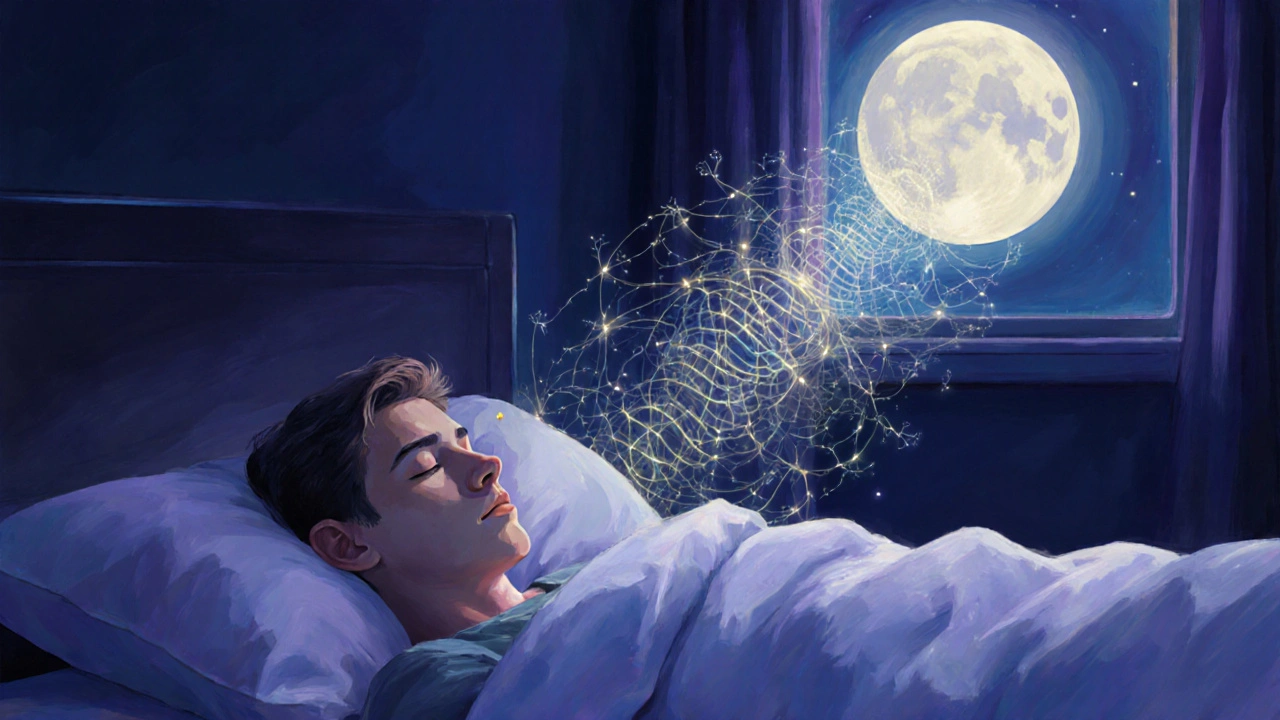REM Sleep
When working with REM sleep, the rapid eye movement phase of the sleep cycle where dreaming peaks and brain activity mirrors wakefulness. Also known as dream sleep, it plays a crucial role in memory consolidation, emotional regulation, and overall brain health, you’re actually dealing with a highly active part of the night that most people overlook. Sleep stages, the series of distinct phases—including light sleep, deep sleep, and REM—govern how restorative a night’s rest will be work together like a orchestra, and REM is the soloist that brings the most vivid dreams. Understanding this phase helps you spot why certain meds or habits might blunt those nightly adventures.
Circadian rhythm, the internal 24‑hour clock that tells your body when to sleep and when to wake sets the stage for when REM episodes appear. A well‑aligned rhythm pushes REM toward the second half of the night, giving your brain the time it needs to process emotions and lock in memories. Disruptions—like shift work, jet lag, or irregular bedtime patterns—can shift REM forward or even truncate it, leaving you feeling foggy the next day. This relationship shows that REM sleep depends on a stable internal clock, which is why light exposure and consistent sleep‑wake times matter.
What Can Interrupt Your REM?
Many sleep disorders, such as insomnia, sleep apnea, and narcolepsy, often reduce the amount or quality of REM sleep a person gets. For example, apnea‑induced breathing pauses repeatedly pull you out of deep sleep, cutting short the REM windows that usually arrive later in the night. On the medication side, sleep medication, including many benzodiazepines and certain antihistamines, can suppress REM or alter its pattern. While these drugs may help you fall asleep faster, they can also blunt dreaming and the restorative benefits that come with it. Knowing which drugs affect REM lets you have an informed conversation with your doctor about alternatives that protect that critical phase.
Beyond disorders and meds, lifestyle factors like alcohol, caffeine, and stress also play a part. Alcohol initially puts you into deep sleep but later fragments REM, leading to vivid, sometimes unsettling dreams. Caffeine blocks adenosine, a chemical that builds up to promote sleep, which can delay the onset of REM. Chronic stress spikes cortisol, keeping the brain in a hyper‑alert state that shortens REM periods. These connections make it clear that REM sleep requires both physiological balance and smart daily habits.
So how can you boost REM naturally? Simple steps such as keeping a dark, cool bedroom, limiting screens an hour before bed, and timing meals to avoid heavy eating late at night all support a stable circadian rhythm. Regular exercise—preferably earlier in the day—has been shown to increase total REM time. If you suspect a sleep disorder, a sleep study can pinpoint where REM is getting cut short, allowing targeted treatments like CPAP for apnea or CBT‑I for insomnia.
In practice, the goal is to create an environment where each of the sleep stages can run their course, letting REM do its brain‑reset job. Monitoring tools like wearables give you a rough look at how much REM you’re getting, but the most reliable measure is how you feel: refreshed mood, sharp memory, and steady energy usually mean you’ve logged enough REM. When you notice gaps—like frequent night waking or a lack of vivid dreams—it might be time to review your habits, meds, or health conditions.
Below you’ll find a curated set of articles that dive deeper into how various medications, conditions, and lifestyle tweaks impact REM sleep. From the way antipsychotics alter dreaming to how liver cancer treatments may affect the sleep cycle, these pieces give you practical insight to protect the night’s most active brain phase. Explore the list to see which topics match your concerns and start optimizing your REM tonight.

How REM Sleep Boosts Learning and Creativity
Explore how REM sleep fuels memory consolidation, sparks creativity, and improves learning, with practical tips to maximize this vital sleep stage.
Read More